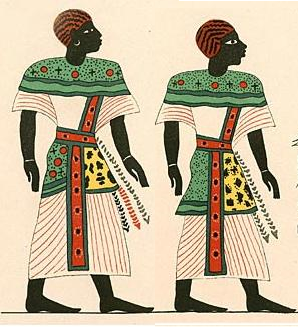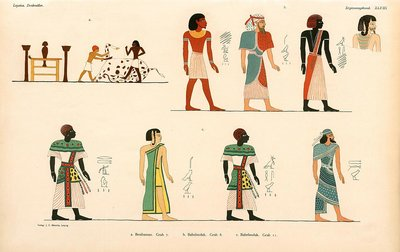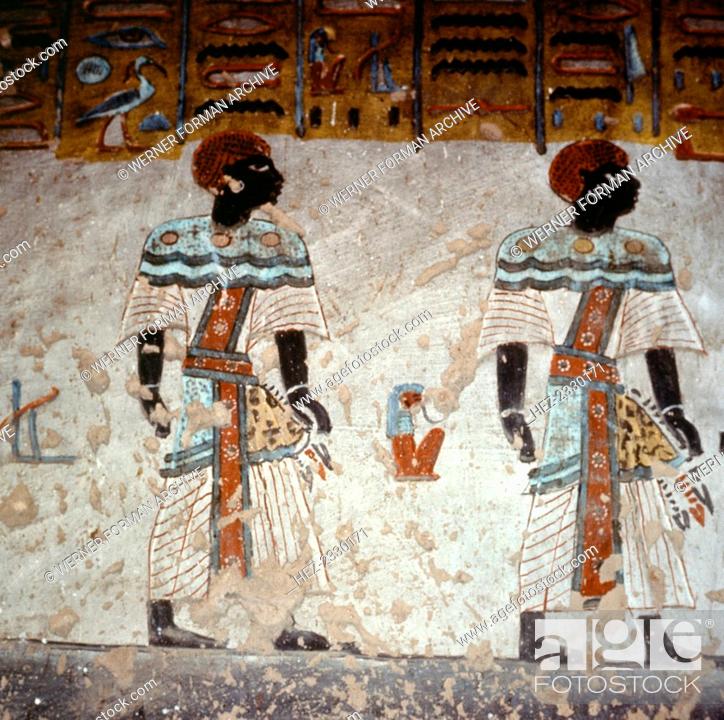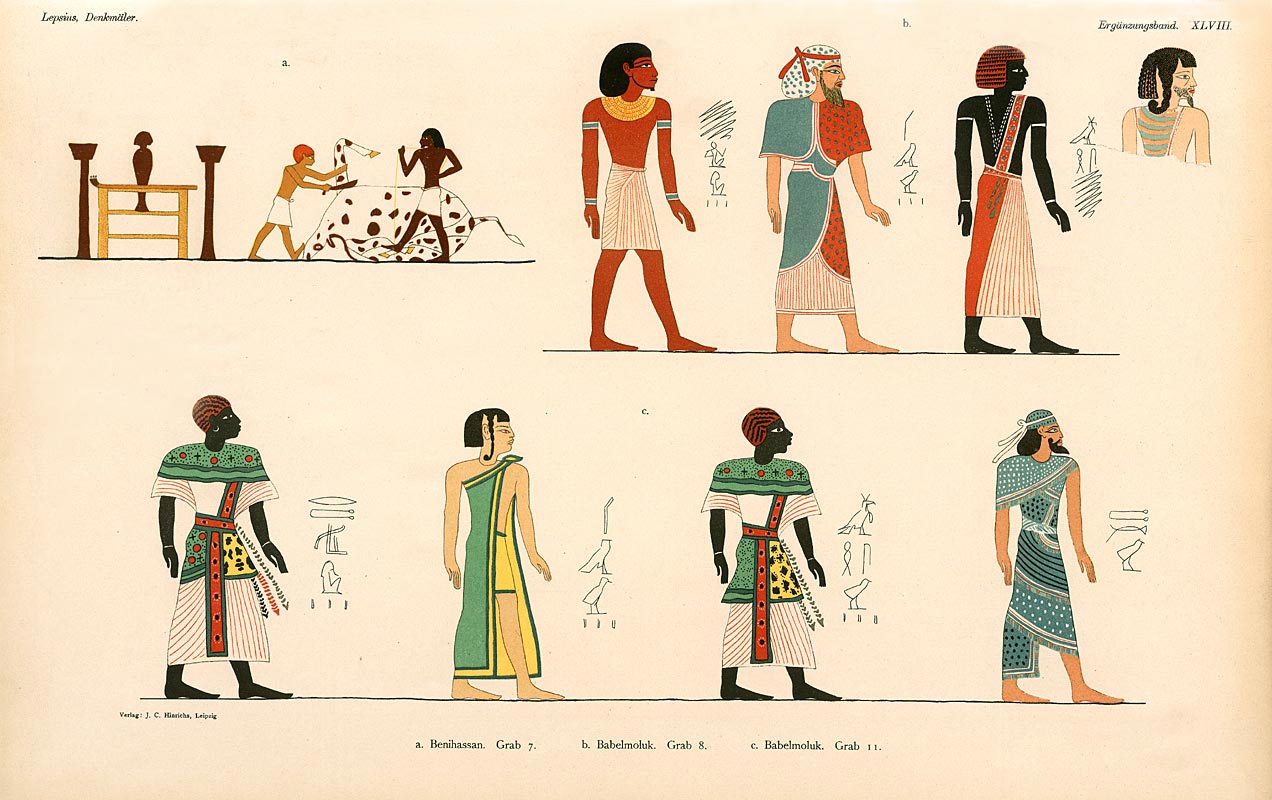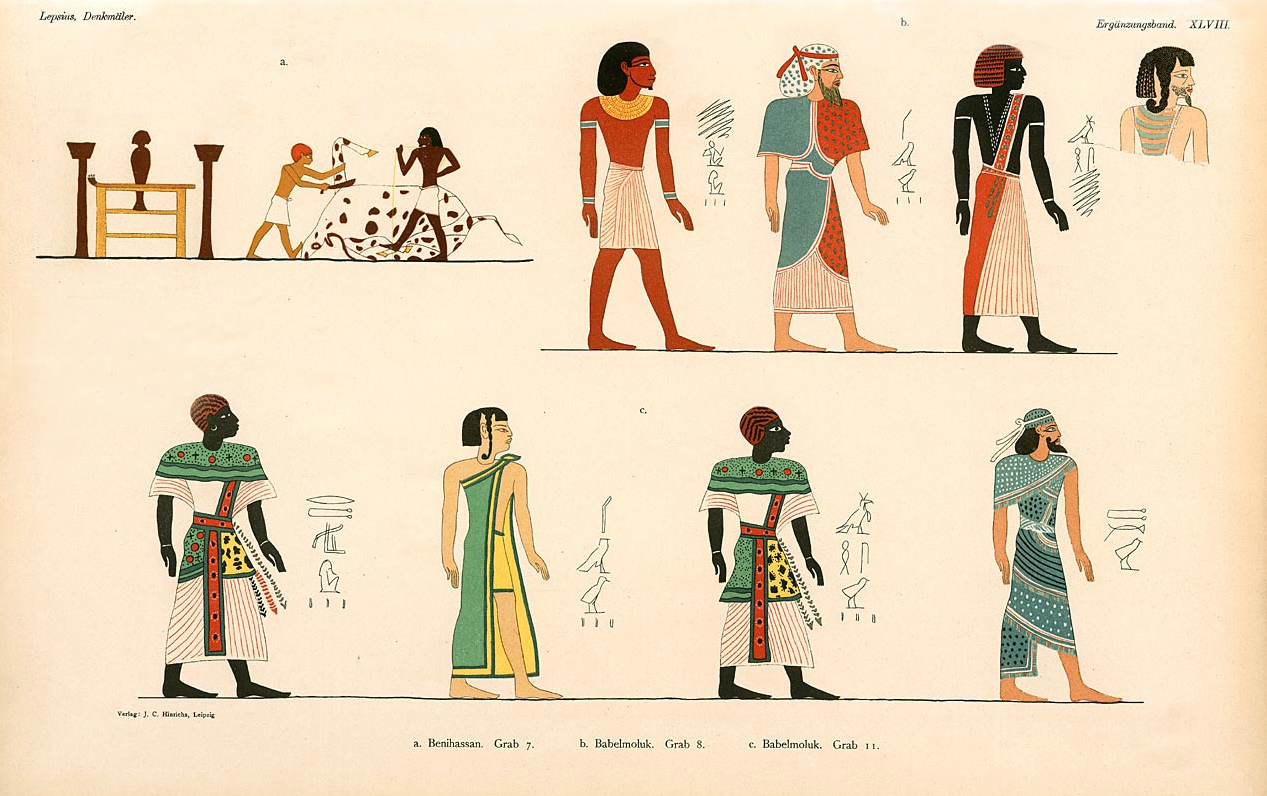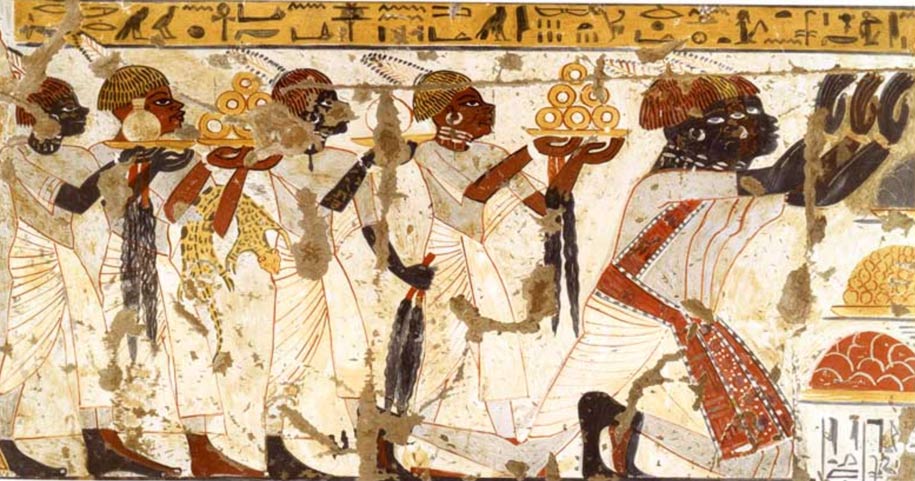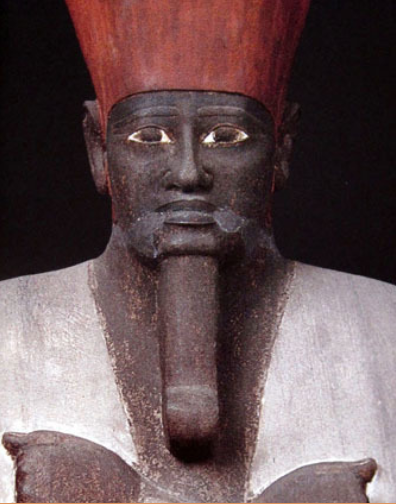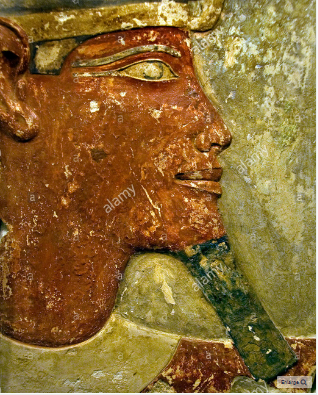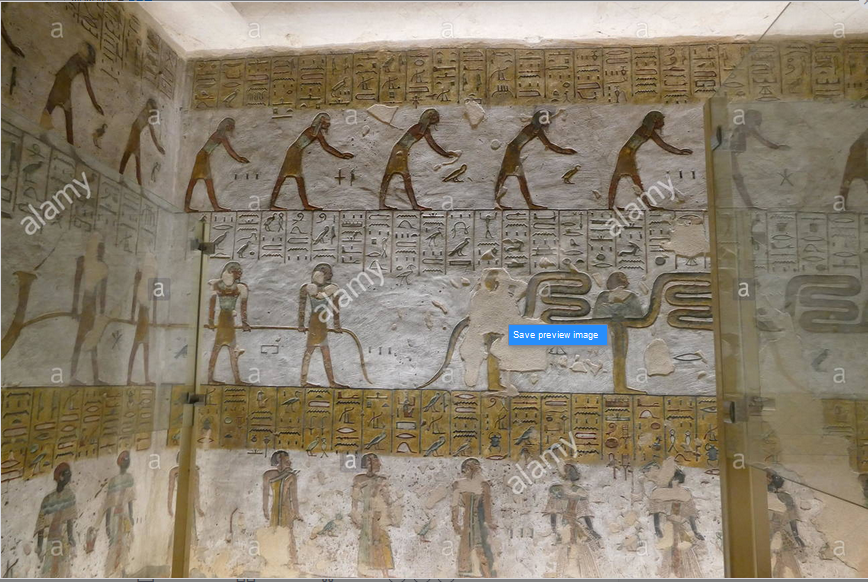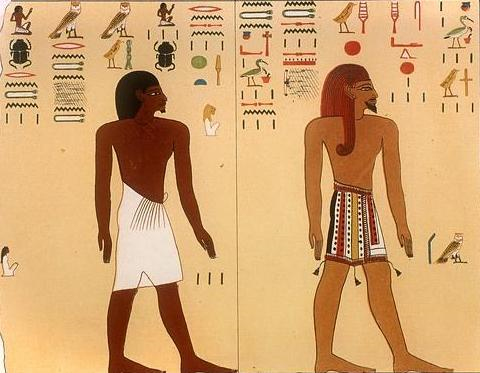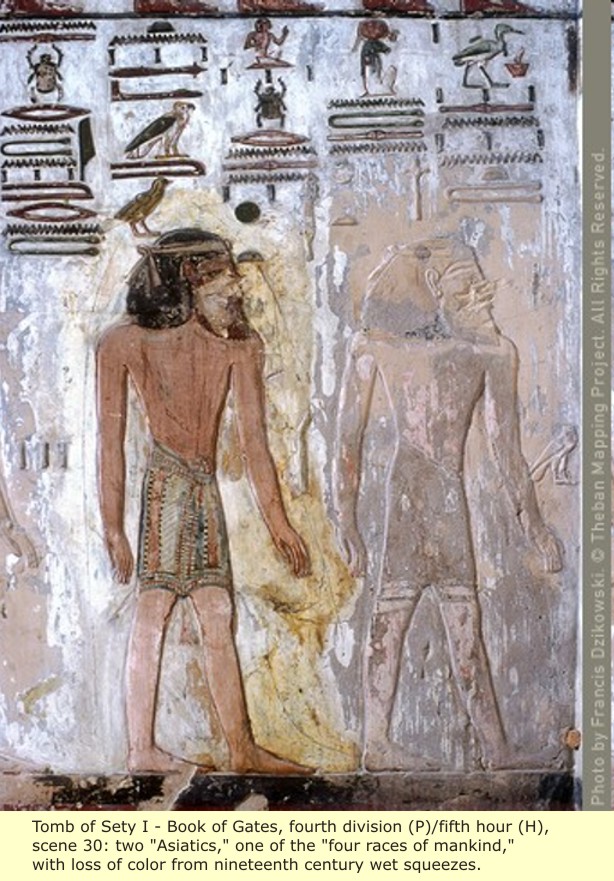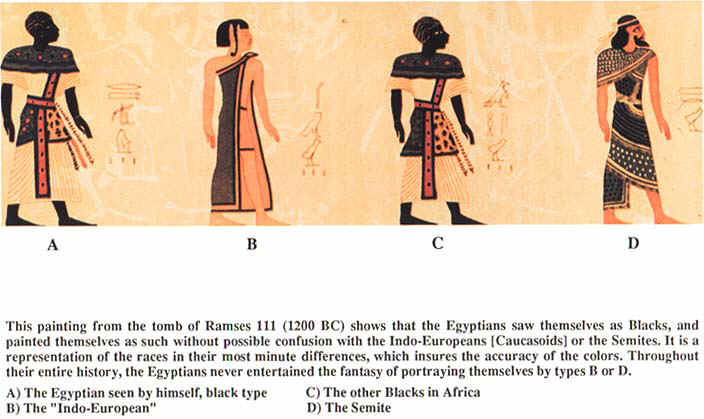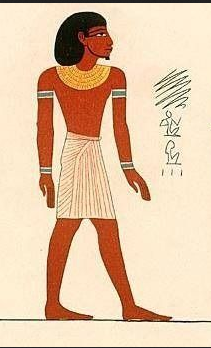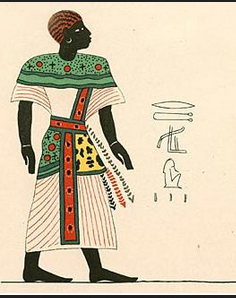Originally posted by the lioness,:
quote:^this brown head at left is apparently a facsimile of the tomb of Merenptah , the two at right, colored black, Nehesy from the tomb of Rameses III
Originally posted by Tukuler:
Huh? It was you showed 'em here, eh?
Lemme amplify the Ramesses Egyptian and Nehesian Denkmaeler facs.
I'll add the Seti Egyptian up front for comparison.
Compare and contrast foreheads, eyes, ears, nose slopes, lips, and chins.
So the above does not correspond to this book cover with the facsimile of Ramses III, Book of gates, KV11 where there is no such difference to amplify


